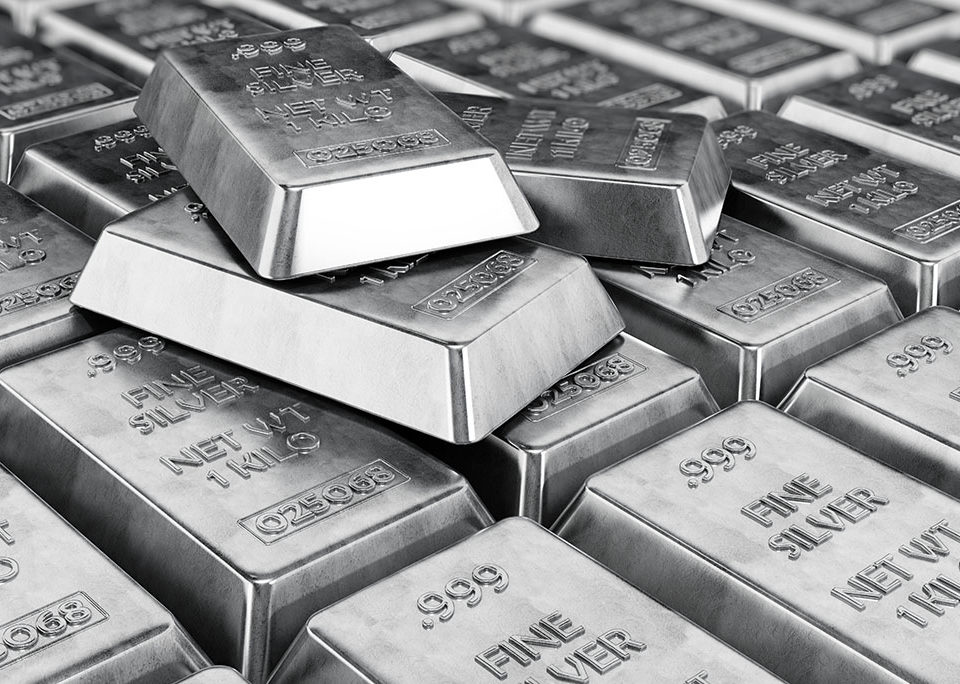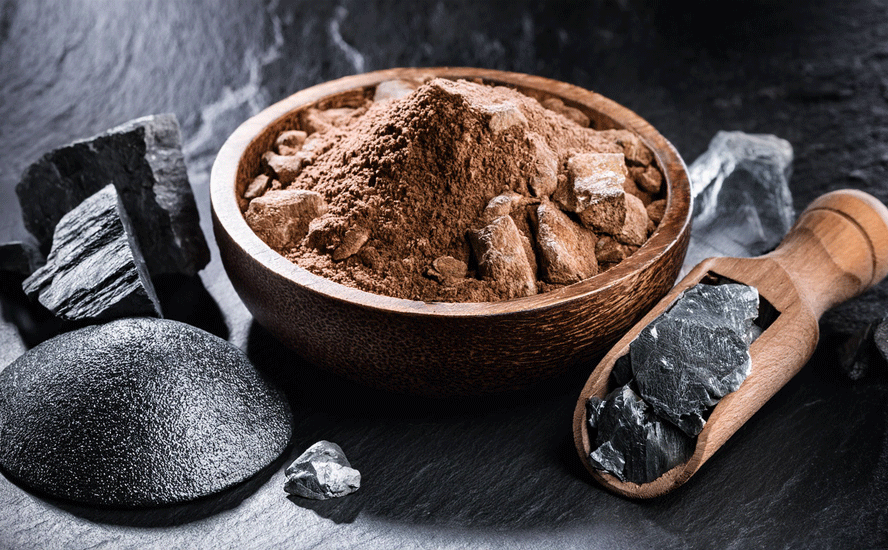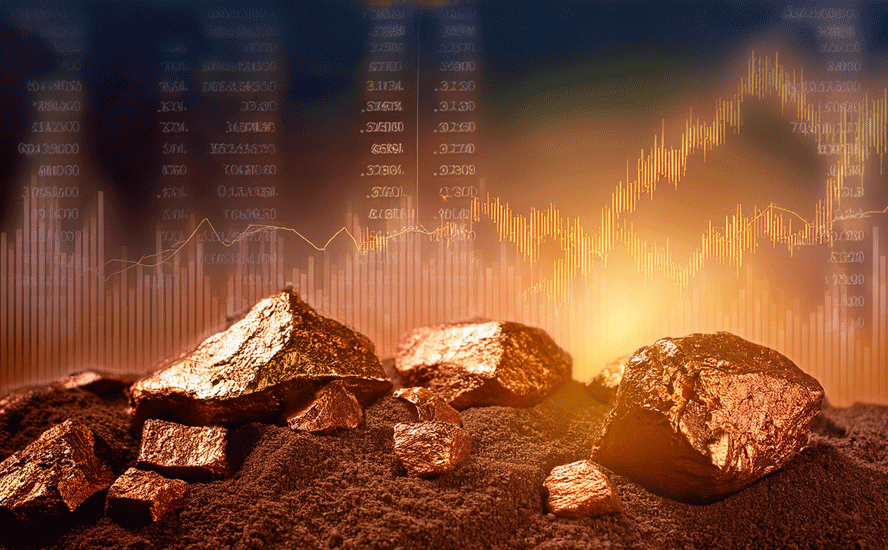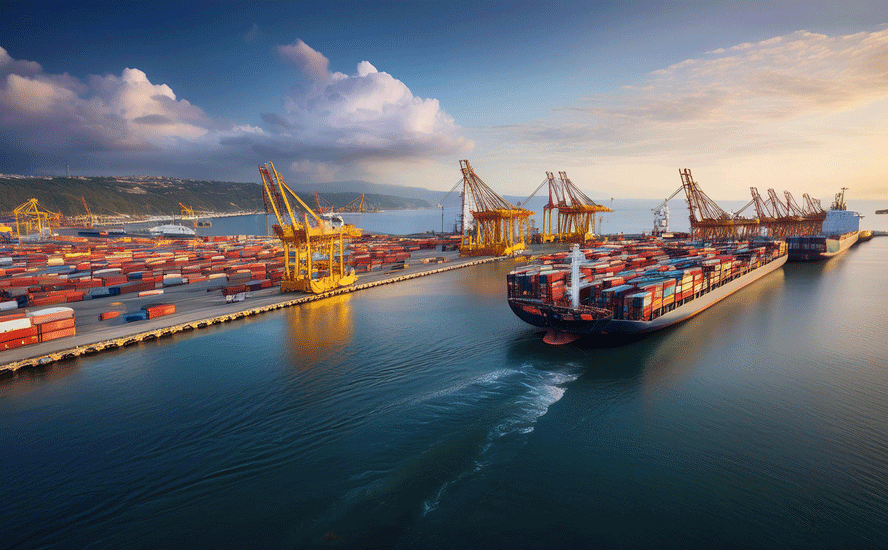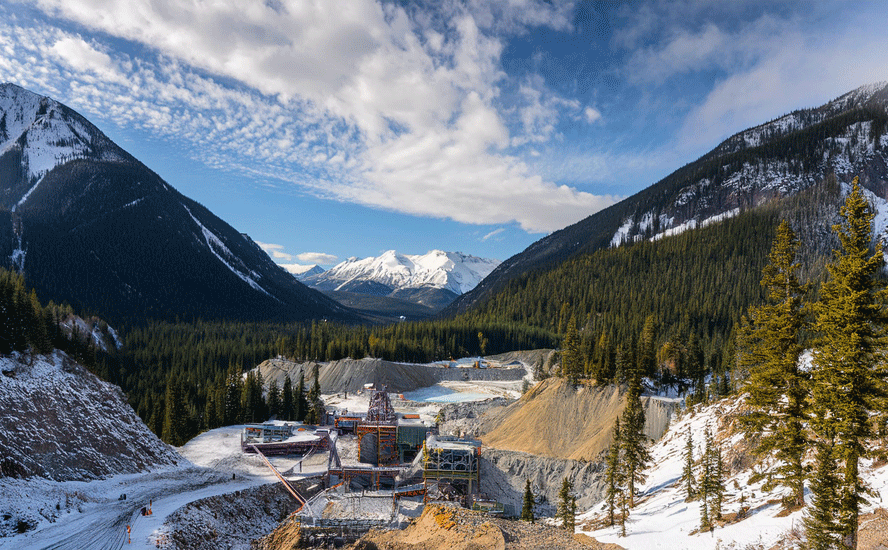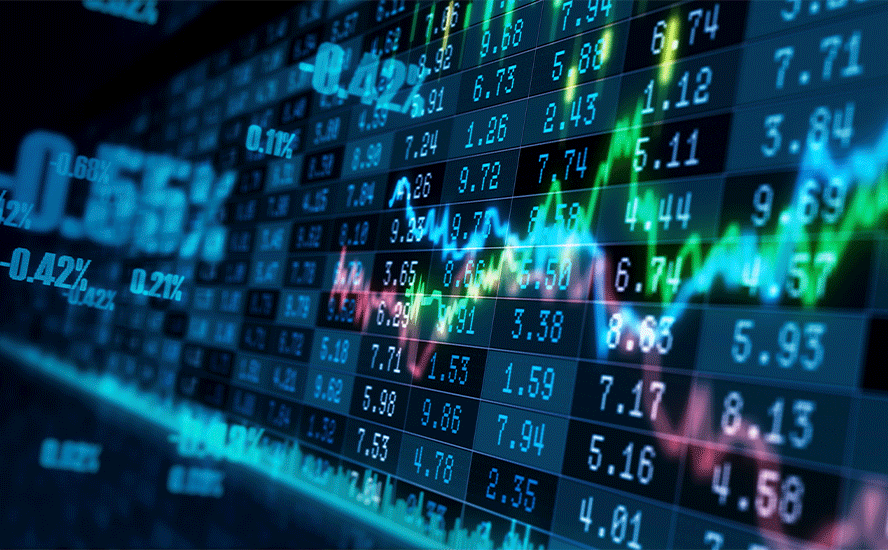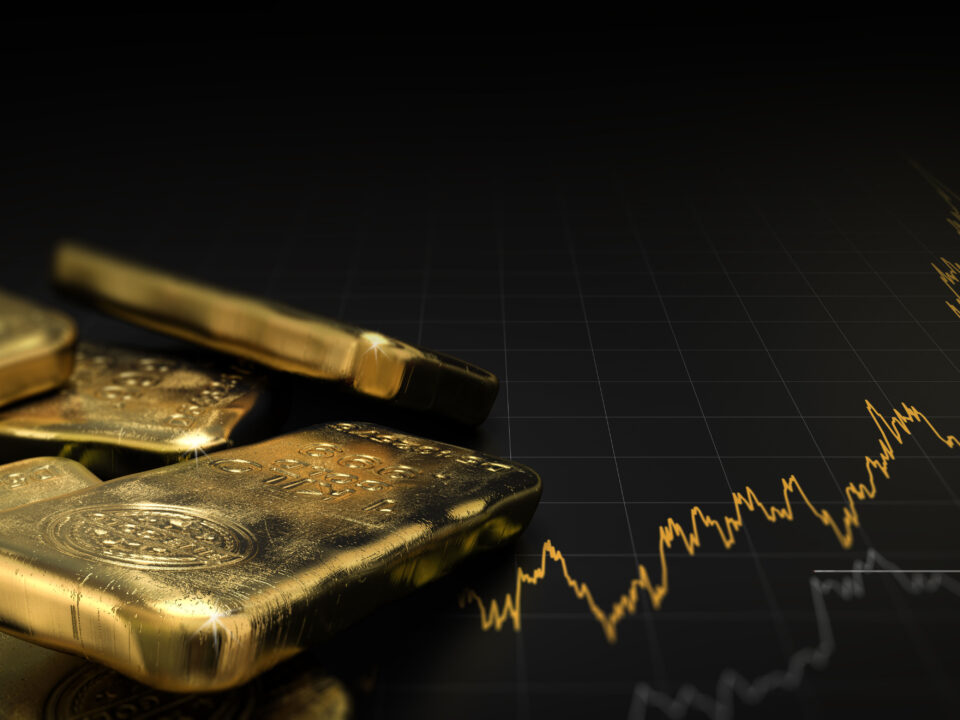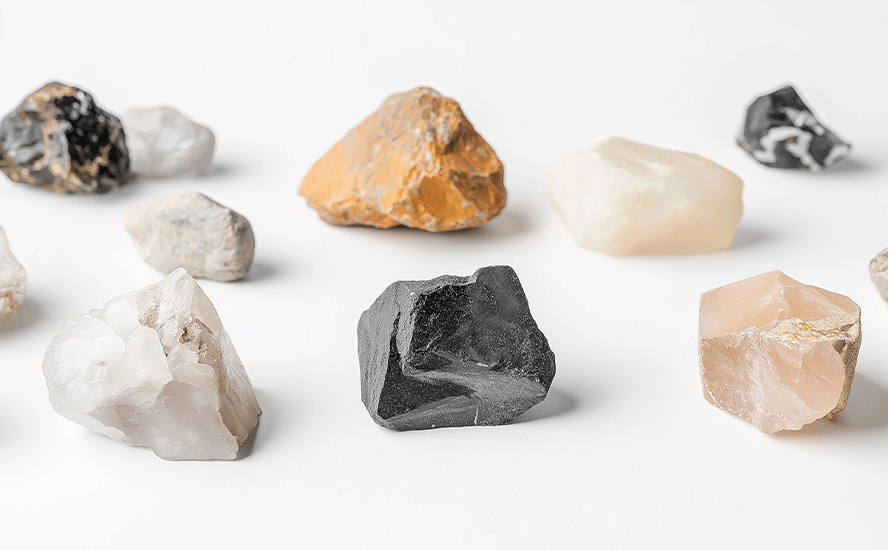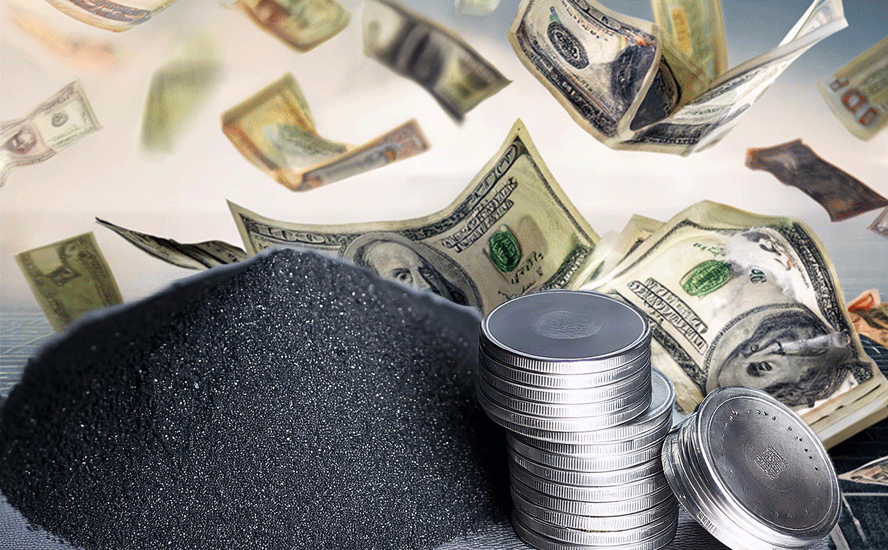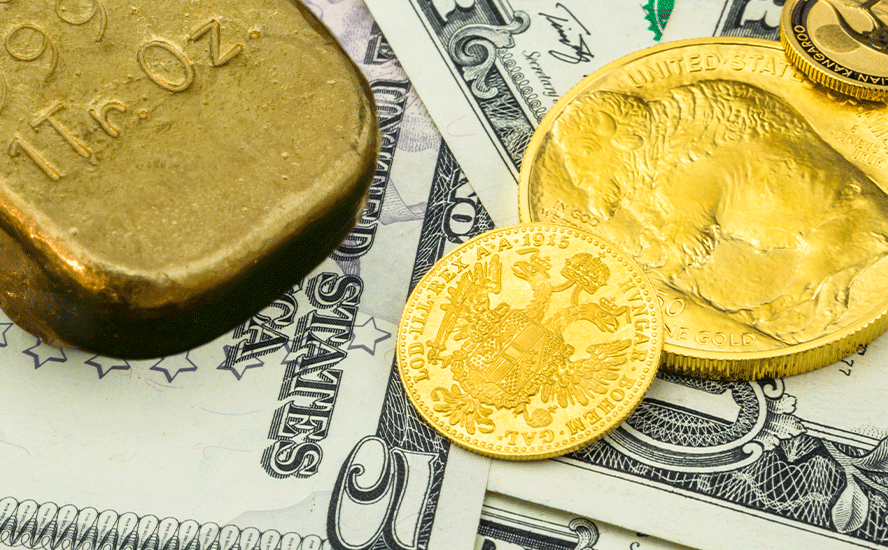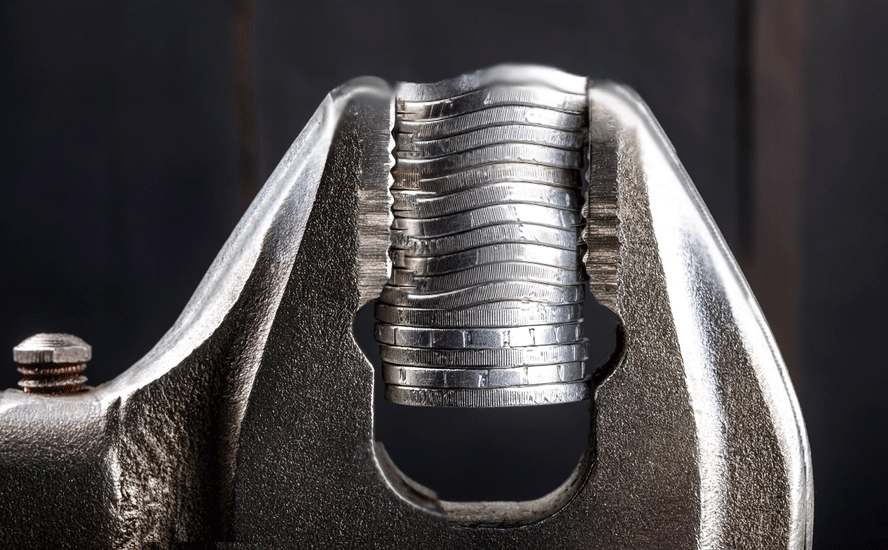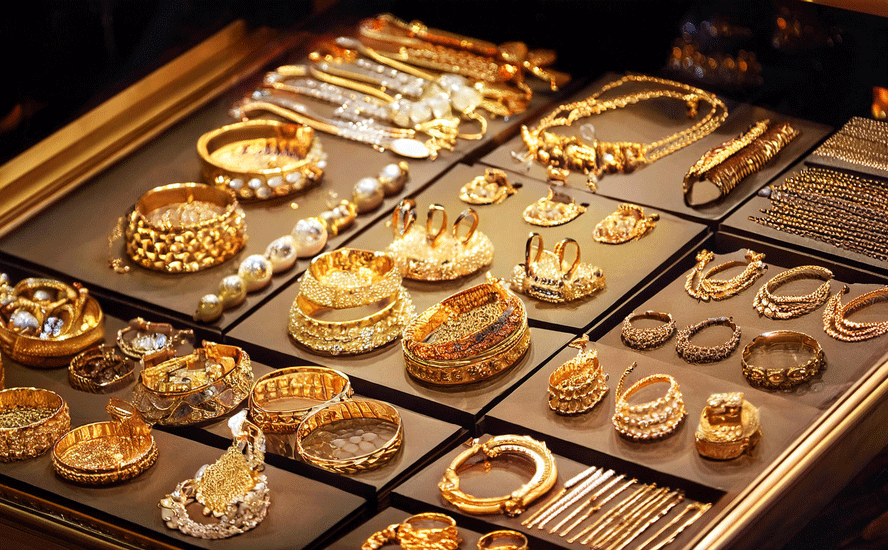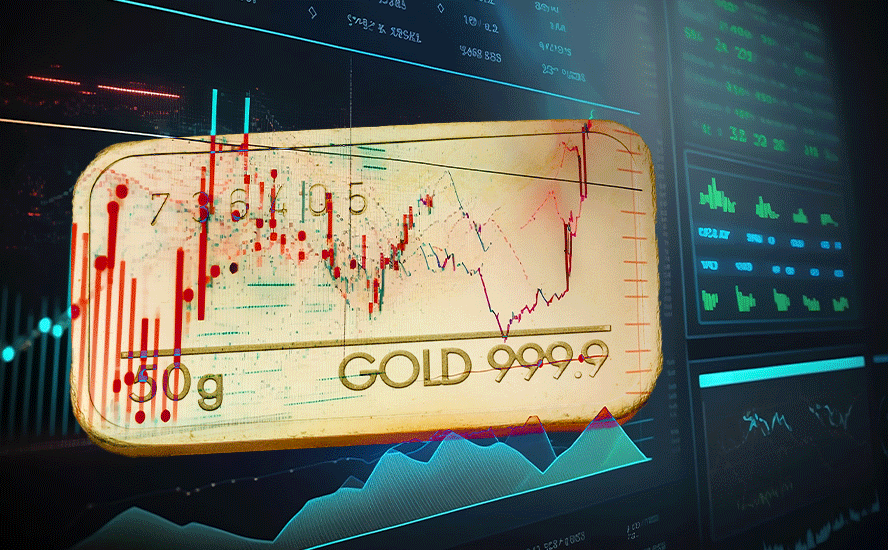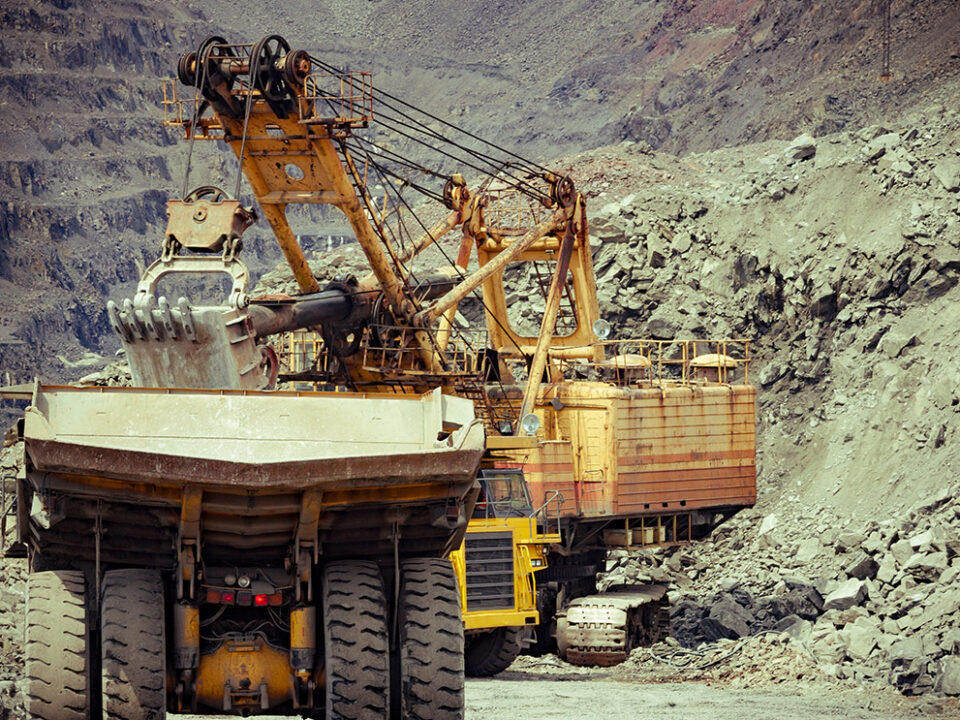A massive bull market is building for gold

2020.04.17
Imagine, if you will, there was no coronavirus. No haz-mat suits, medical masks & gloves, no make-shift morgues. No terminally ill patients hooked up to ventilators, no horrible deaths without love ones close, no lockdowns, no social distancing, no deserted streets, no bailouts, no emergency wage supplements, just a regular spring with birds chirping and flowers blooming.
Of course there is no getting away from the covid-19 pandemic that has slammed into populations and economies like a “God of chaos” comet. It seems to have permeated civilization, threatening lives, livelihoods, and the way we conduct ourselves professionally and socially.
I’d just like to put it into perspective, by looking back at where we were, before all this madness began. Because in the wise words of philosopher George Santayana, “Those who cannot remember the past are condemned to repeat it.”
It is tempting, while still in the thick of the pandemic, to don rose-colored glasses, but weeks before the onset of covid-19, we were writing how things were not going as well as they appeared, with the global economy.
And while it’s also tempting to base gold’s current run on heavy demand for the world’s oldest safe haven, it is worth noting that, for all of 2019 and during the first two months of the year, gold was reacting to events that had nothing to do with a global health emergency.
In this article we are placing gold on a timeline that begins last summer, rolls into the present situation, and ends with some bold predictions as to what the future could look like for gold, the grand-daddy of precious metals, and its little brother silver. Spoiler alert:
We conclude that current economic conditions are forming an extremely solid foundation for a precious metals bull market that, imho, will last at minimum the length of the pandemic, and likely well into the recovery.
Past
Our story begins with one-year price charts for gold and silver.
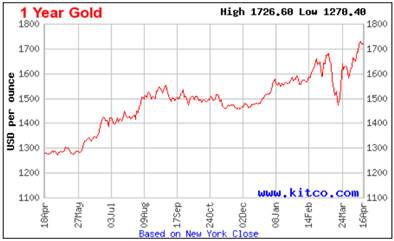

Both metals spiked last summer after the US Federal Reserve began cutting interest rates. In July the Fed lowered rates three times before freezing the (benchmark) federal funds rate at a range of 1.5 – 1.75% in November. That, along with similarly dovish policies among other central banks, a record $17-trillion of negative-yielding sovereign bonds, and fresh safe haven demand due to tensions with Iran, and a lack of progress on trade talks, to name two key issues, powered the precious metals to new heights. Gold reached $1,550 per ounce in September 2019, a level not seen since April 2013, and silver the same month hit a three-year high of $19/oz.
In December, North American investors were divided between those who believed the decade-long stock market bull was going to keep running into the 2020s, and investors who, wary of something terrible happening, were hoarding cash and gold. We described this polarity of views in Gold vs cash in a crisis
In that article we predicted the next crisis will be a debt crisis, based on the fact that worldwide, total debt including household, corporate and sovereign loans, in 2019 hit a record $250 trillion, led by the US and China.
The US national debt in November surpassed $23 trillion. Driven by Congressional borrowing, it rose 5.6% up to Q3 2019, compared to the same period in 2018, against nominal GDP of just 3.7%. In other words, debt was outrunning economic growth.
Excess debt is a brake on aggregate demand. Consider: over the last 13 years, global debt has increased by $128 trillion, but GDP has only risen by $27 trillion. Ie. countries borrowed five times more than their economies produced.
Wolfstreet asked a good question:
If the growth of the federal debt outruns the economy during these fabulously good times, what will the debt do when the recession hits? When government tax receipts plunge and government expenditures for unemployment and the like soar? The federal debt will jump by $2.5 trillion or more in a 12-month period. That’s what it will do.
Reading that question now, knowing how badly two months of coronavirus has damaged the global economy, sends a shiver of fear up my spine.
Why? Because I know the answer. The US budget deficit this year is expected to reach nearly $4 trillion, after Congress pumped about $2.5 trillion into the economy to stem the bleeding from coronavirus lockdowns.
The predicted $3.6 trillion spending shortfall amounts to 17.7% of GDP, nearly double the 2007-09 Great Recession, when the deficit never reached even 10% of GDP. But guess what? The government doesn’t have the money; the gap will have to be bridged through borrowing or printing money. No doubt much of it will be financed, pushing the national debt to a new record high. According to usdebtclock.org, it has already reached $24.3 trillion.
Yet in February 2020, there appeared to be nothing wrong with the US economy.
Unemployment was at its lowest in 50 years, wages in 2019 grew by 3.1%, and stock markets kept rolling along.
Turns out much of this was “fake news”. Marketwatch reported US companies cut back on investment last year, due to reduced exports and disruptions to the global economy from the US-China trade war.
High US stock market performance masked another economic indicator, that had fallen to its lowest level since 2016 – the purchasing managers index.
The IHS Markit manufacturing PMI in January fell to a three-month low – from 52.4 in December to 51.7; any reading below 50 indicates poor economic conditions.
This shows that, well before supply chain disruptions and industrial demand destruction owing to covid-19, US manufacturing was slowing.
We said there would be more interest rate cuts, beyond the three last year, to deal with the looming threat of the coronavirus which in February was mostly confined to China.
In March the central bank obliged, first cutting the federal funds rate by half a percentage point, then slashing it by another full percentage point, taking the Fed’s benchmark for short-term lending down to near 0%.
We also pointed out the spread between 2- and 10-year Treasury yields, which in February was the flattest since November. A yield curve inversion, when short-term yields push higher than long-term yields, is a predictable recession indicator. Right again. The covid crisis is threatening to spin the global economy into the steepest, and worst recession since World War II.
On March 9 the entire US yield curve fell below 1% for the first time ever. When real interest rates (interest rate minus inflation) “go negative” (ie. below 0%) investors usually flock to gold.
How was gold reacting to all of this bad economic news? On Feb. 24 gold’s price hit a fresh 7-year high of $1,659 an ounce, and silver rose to $18.61/oz.
Reports of the covid-19 outbreak impacting economic growth forecasts, earnings and stock prices, had investors piling into safe-haven assets – precious metals and US Treasuries – despite the latter’s record-low yields.
“Investors have suddenly got cold feet and are running for the exits,” Bloomberg quoted Chris Rupkey, chief financial economist for MUFG Union Bank. “Bond yields and stock prices are back in sync as the plunging markets mean the economic outlook is not looking as good this year as many thought.”
Curiously, gold and the US dollar in February rose in tandem, veering from their normal pattern of moving in opposite directions.
“Gold and the dollar are going up for the same reason,” Kitco quoted Daniel Pavilonis, senior commodities broker with RJO Futures. “There is a flight to quality in the dollar and a flight to quality in gold because of the coronavirus.”
The latter was reflected in huge ETF inflows in January and February.
In a research note Ole Hansen, the head of commodity strategy at Saxo Bank said “With the metal moving higher, despite the mentioned headwinds from other markets, it is difficult to see what at this stage can halt or pause the rally.”
However in March the gold rally did pause, in fact gold prices experienced major volatility alongside plunging stock markets, as the virus spread rapidly from China to South Korea, Iran and Italy.
Seen in the 6-month gold chart below, within four days spot gold fell from $1,672 on Feb. 24 to $1,564, corresponding with the worst equities sell-off since 1987. The exception to the normal inverse relationship between stock prices and gold prices was explained by traders selling gold to cover massive losses in stocks.
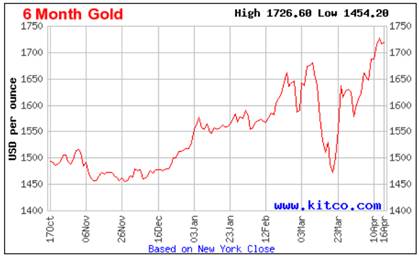
A bounce to $1,674 was short-lived, with gold experiencing an even steeper downleg to $1,477 on March 18 – a 7-year low – before rising again to $1,660 on March 24.
As stock markets roiled, the US dollar index fell from 99.86 on Feb. 20 to 94.89 on March 9. Since then, continued flight to the US dollar and Treasuries has kept DXY close to 100.

As we predicted, the Fed stepped in to lower interest rates, twice within two weeks, while introducing a number of stimulus measures aimed at keeping credit rolling through the financial system. A new round of quantitative easing, $700 billion in asset purchases, was changed to “unlimited”. The Fed also announced a $300 billion credit program for businesses and consumers. That was followed by a $2.3 trillion lending program announced on April 6, whereby the Fed can purchase up to $600 billion in loans, buy downgraded corporate bonds, and purchase $500 billion in bonds from state and municipal governments.
At this juncture we pointed out the similarities and differences between the great bank bailout of 2008 and the current covid-19 stimulus – the main difference being that in 2008-09, there was no coronavirus to restrict consumer spending, which makes up around 70% of US GDP.
We stated: This, in our view, is the biggest risk to the US economy, right now. How can the usual stimulus response of low interest rates and money-printing work, in an economy where citizens are too scared to go out and spend? Could the lack of spending lead to deflation? Even a recession?
Again, our predictions were borne out.
A decline in consumer spending is the canary in the coal mine for deflation.
We saw it happening as early as September, 2019, when US retail sales fell for first time in seven months, as households slashed spending on building materials, online purchases, and especially cars.
Three months later, sales at clothing stores declined the most since January 2009.
And instead of going out and spending their hard-earned shekels, in 2019, many Americans were plowing them into savings accounts.
Now, in the month since the coronavirus lockdowns started in mid-March, an eye-popping 22 million Americans have filed for unemployment benefits. With so many people sidelined from the workforce, all that many households can afford are basic necessities, and for some even that is a stretch.
Their frozen spending is reflected in falling prices, ie. deflation. In January US inflation was 2.5%, in February 2.3%, and in March, when covid-19 hit the United States, inflation sunk to 1.5%.

On April 14 Reuters reported that US import prices fell the most in five years, explaining that, Restrictions on social movements to curb the spread of COVID-19 have greatly suppressed demand, leading to slumping gasoline prices and record decreases in the costs of hotel accommodation, apparel and airline ticket prices.
At the same time, the prospects of a deep global recession and an oil price war between Russia and Saudi Arabia, which has since been resolved, have sent crude prices tumbling.
Present
The trends we identified as affecting gold prior to coronavirus, are still in play, but the worsening economic fall-out has meant their effects are magnified, resulting in even higher gold prices. We are talking about low interest rates, quantitative easing, debt, GDP, declines in manufacturing and retail spending.
First, global GDP is anticipated to slide 3% this year, triple the slowdown in economic activity during the Great Recession.
The forced closure of businesses across the United States, and the sudden surge in unemployment, is expected to contract US GDP by 30%, at an annualized rate in the second quarter, and 5% overall in 2020.
That is huge.
In an earlier article we showed the close relationship between debt-to-GDP ratios and gold:
As the crisis continues to prevent businesses from opening, and people from getting out from their homes and spending money in the economy again, GDP will continue to stagnate, or fall.
According to Bloomberg Economics’ new GDP tracker, we were already in recession in March.
That’s the first part of a rising debt-to-GDP ratio – a fall in GDP. The second part is an increase in debt. A Bloomberg article states the Federal Reserve is “poised to spray trillions of dollars” into the US economy:
Combined with an unlimited quantitative easing program, the Fed’s souped-up lending facilities are set to push the central bank’s balance sheet up sharply from an already record high $4.7 trillion, with some analysts saying it could peak at $9-to-$10 trillion.
Wow. Consider what a $10 trillion Fed balance sheet will do to the debt-to-GDP ratio. Already at 108%, a level not seen since World War II, it’s not inconceivable for the ratio to spike to $150%, or 200%. That would mean for every dollar the US economy produces, it has to borrow $1.50, or $2.00. That’s insane.
As mentioned the US budget deficit this year is expected to reach nearly $4 trillion, which amounts to 17.7% of GDP. The deficit-to-GDP ratio didn’t even hit 10% during the financial crisis, and now predictions are it will double. According to Goldman Sachs, additional stimulus spending is likely, in the neighborhood of $500 billion.
Meanwhile the US economy “patient” keeps getting sicker, despite the large doses of stimulus “medicine” being administered.
In March, US manufacturing output dropped the most in over 74 years (!) due to broken supply chains owing to covid-19 business closures, layoffs and interruptions to normal operations.
Reuters confirms what we noted earlier, that manufacturing was already struggling, due to the trade war with China, well before the coronavirus landed on US shores.
Among the worst-hit sectors are oilfield services, like drilling and shaft exploration equipment, motor vehicles and parts, which tumbled 28% last month, and construction supplies which fell 5.8%.
Back in 2018 we predicted the death of the shale gas boom by the early 2020s, due to the “Red Queen Syndrome”. The production rate of shale gas wells falls off so quickly, it’s hard for producers to get ahead – to keep production up, they have to keep adding wells at a faster rate than previously. The Red Queen syndrome alludes to the character in ‘Alice in Wonderland’ who famously declared that she had to run faster and faster just to stay where she is.
A recent headline screamed, ‘Oil in the age of coronavirus: A U.S. shale bust like no other’
We could not of predicted the coronavirus crashing shale oil, but we did correctly state that shale oil extraction is not a sustainable business model. For the past couple of years, poor returns have left producers scrambling to get financing.
Reuters explains:
The U.S. oil boom died on March 6, the day Saudi Arabia and Russia ended a four-year pact that curbed output and gave shale a price umbrella. Shale firms have accrued hefty debt during the years of expansion, leaving them exposed to the price crash that followed.
As soon as oil prices dropped in March, to around $25 a barrel, these same producers faced well closures and even more distress, with lenders refusing to grant them additional loans. And while OPEC+ has agreed to reduce oil output by 9.7 million barrels of oil a day (Mbopd) – four times deeper than cuts made in 2008 – it is unlikely to offset demand for oil falling off a cliff. According to the IEA, global demand in April will decline by 29 Mbopd, over one-quarter of the 100 million barrel a day daily demand figure for 2019 – the biggest drop in 25 years.
So despite Donald Trump heralding the recent truce between Russia and Saudi Arabia over crude oil supply cuts, “saving hundreds of thousands of US oil jobs,” they will in fact do nothing to save US shale oil. Shale prices have dropped so low, they are below production costs; some producers are concerned they may not even be able to sell their product. Pipeline operators are asking for proof that sellers have buyers for their oil, before connecting new and existing wells, so as not to add to the glut – by mid-May, storage facilities are expected to be full.
Consulting firm Rystad Energy predicts close to 240,000 oil-related jobs will be lost this year – about one-third of the onshore and offshore workforce.
Beyond manufacturing and oil, US retail sales are collapsing. With over 22 million Americans thrown out of work and confined to their homes, retail fell 8.7% in March, the biggest decline since the government started tracking it in 1992.
Auto sales crashed 25%, clothing sales were down 50%, furniture sales receipts plummeted 26% and spending at electronics and appliance stores dipped 15%.
Economists forecast consumer spending will plunge at an annualized rate of at least 17% in the first quarter, the weakest performance since record-keeping started in 1947.
The worse the economic performance, the better it is for gold.
On April 14 spot gold hit a 7-year high of $1,718 an ounce, due to concerns over global growth, and as a wave of fiscal and monetary measures steered investors towards precious metals and away from assets denominated in paper currencies.
“The flood of new money digitally printed by the central banks and huge debt pile by the states to fight the negative impact of the coronavirus (are) helping gold,” said Commerzbank analyst Carsten Fritsch.
Holdings in the world’s largest gold-backed ETF, SPDR Gold Trust, surged to 1,009 tonnes Monday, the most since June 2013.
The longer stimulus measures continue, including a creeping expansion of the Fed’s balance sheet and negative real interest rates (interest rates minus inflation) which are always bullish for gold, we see no reason to doubt that gold will keep climbing.
In a recent column, Frank Holmes, CEO of US Global Investors, mentions a Bloomberg commodity strategist who observes that the price of gold appears to be seeking to revert to its long-term mean relative to the S&P 500 Index. This would suggest that we could see a new record high, driven largely by excessive money printing. (currently equal to US$2,800.00 gold – Rick)
“Unprecedented global monetary stimulus is a worthy catalyst for the per-ounce price of gold to revert to its long-term mean vs. the S&P 500 Index, in our view,” McGlone explains.
On the supply side, gold’s fundamentals are bullish. Gold output peaked in 2018 at 3,503 tonnes, in 2019 it fell to 3,463t – the first annual decline in 10 years. We believe it will continue to drop further, owing to continued depletion of the major producers’ reserves, the lack of new discoveries to replace them, and production problems due to lower grades and temporary, possibly prolonged, stoppages because of the coronavirus.
Regarding the latter, it was interesting to see mines in Quebec being deemed an essential service. Closed since March 23 due to covid-19, Quebec’s premier said Monday the province will be allowed to resume mining on April 15. The good news prompted a number of Quebec gold miners to announce plans to re-start operations, including Agnico-Eagle’s and Yamana Gold’s Canadian Malarctic open-pit mine, the La Ronde Complex and Goldex mine, Iamgold’s Westwood mine, and Eldorado Gold’s Lamaque operation.
Exploration, however, is on hold until May 4.
Holmes notes gold and gold stocks are among the highest-performing assets of 2020, with physical gold up about 13.8% through April 10, and senior gold miners advancing 2.8%.
In fact gold bars and coins are not easy to come by. The US Mint reportedly sold over 56,000 one-ounce American Eagle gold bullion coins in the first two weeks of April – a volume 465% higher than all of April, 2019. The mad scramble for gold & silver amid the coronavirus pandemic is not likely to let up anytime soon; recently the Mint decided to temporarily halt production at its West Point, New York facility due to the risk to employees from covid-19.
The current gold-silver ratio, 111:1, is double the historical ratio of 54:1, meaning silver is more than on sale, it’s being given away. As we wrote in Hi-yo Silver Away! silver is expected to do well in 2020 through a combination of higher industrial and investment demand, and tightened supply owing to mine production issues and output cuts.
Future
Like most people in mining, we know the ups and downs of the resource sector are nothing new; in fact they leave us uniquely qualified to deal with a black swan event like a global pandemic, that sinks all boats.
We are optimistic about the future, but realistic. At this point, a V-shaped recovery looks unlikely. Some market observers think it will be more like a long fat U, with recovery slow and gradual, a return to some semblance of normal measured in years, not months.
According to JP Morgan, global GDP will slump 14% in the second half of 2020. In the United States, that could mean 25 million layoffs – as it currently stands, 13% of the US workforce has been idled.
Just as bad, is how the economy-killing pandemic will impact corporate bottom lines; Morgan expects global profits to plunge by 70% in Q2 2020. And they won’t be coming back for awhile. The investment bank predicts that even after rebounding from covid-19, global profits will be stuck 20% below their pre-virus levels at the end of 2021. It may take another year or two after that, just to reach pre-pandemic baseline financials.
If these awful predictions prove correct, we may be looking at prolonged unemployment, rising corporate debt, and a moribund stock market until 2022-23. We realize that’s not what anyone wants to hear right now.
Eddie Hobbs, a columnist at the Irish Examiner, has some more pain points for you to think about.
First, he says there are three phases to this recovery – medical, financial markets and the real economy. Currently we are in the first phase, characterized by the pandemic onset and the first countermeasures. As for what comes next, The deluge from the fractures will follow. Capitulation will mark the bottom before recovery… There is no going back to the old economy, this is going to be deeper and longer than before.
On the way, Hobbs expects vulnerable countries to go bust, with at least one OECD country needing a bailout. Economies with a lot of dollar-denominated debt could be hurt bad, as the US dollar – still the reserve currency despite all the US economy’s, and its political leaders’ shortcomings – maintains strength against other currencies.
With so many unemployed, tax revenues will collapse, leading to further rounds of quantitative easing to bail out local and state/ provincial governments. Here in British Columbia, the City of Vancouver, highly overleveraged, teeters on bankruptcy and is already asking for a handout.
With no vaccine in sight, and covid-19 curves refusing to flatten, national health care systems could temporarily collapse. Hobbs writes, The delay will have grim outcomes for tourism, airlines, sports and other mass gathering events, those who survive will mop up, including Governments who nationalize flag carriers…
The very severe and sharp stop in large parts of the economy is likely to see economic activity plummet by a fifth over Q1 and Q2 2020 with the potential to drag into H2. At best 2021 will see sluggish growth, at worst further deflation. Each deflationary test will be met by an air fleet of Keynesian, counter cyclical monetary and fiscal carpet bombing.
Unemployment will rise sharply to swamp a fifth of workforces and despite social welfare buffers and fiscal programmes such as tax suspensions, utility holidays and loan suspensions, consumer savings will deplete to service core lifestyle costs. This will lead to a severe weakening of consumer spending power on the other side until savings are replenished.
There will be negative price expectations due to the fall in demand for discretionary items. This will affect many prices, including property. The decline in oil prices is a consumer buffer, but hurtful to hydrocarbon producing economies and to national tax revenues.
Overleveraged corporates and institutions without the cash buffers to withstand the cliff fall in economic activity, especially in consumer discretionary, retail, transport, airlines, hospitality, etc., will become casualties. This means a slew of distressed sales, bankruptcies, administrations and takeovers as the weak are consumed by the strong and flagships get nationalized where there is market failure.
The banking system, despite liquidity operations becomes unsafe leading to problems at inter-bank level and will require fresh emergency quantitive easing operations to prevent gumming up.
Not all banks will escape, the spike in non-performing loans will hit weaker balance sheets a blow that will lead to defaults and contagion and, if not rapidly contained, led to banks shutting for a spell during restructuring.
Only banks deemed of systemic importance will be socialized, others will be subject to bondholder and deposit holder haircuts.
After the deflationary shock created by the [Great Pandemic Crisis], it is difficult to see how a prolonged phase of high inflation will not eventually emerge from money expansion and rising velocity which will test the fundamental value of fiat currencies. In this climate the value of currency becomes a casualty and gold a king.
And that’s for the G20 countries. For poorer nations lacking the medical supplies, facilities, health care workers, and whose economies do not have the monetary or fiscal resources needed to ride out a global pandemic, the outcome could be dire.
CBC notes reports that civil unrest in Iraq, following the loss of oil revenues, may be an indicator of wider economic and political fallout.
[Bessma Momani, a specialist in international financial institutions at Ontario’s University of Waterloo] says the world’s poorest people, not just in South Asia, sub-Saharan Africa and South America but in U.S. inner cities, too, will suffer the most, and in ways that could lead to revolts. Places such as Venezuela, already chaotic, may collapse into something worse.
The economist quoted by CBC notes the IMF is not equipped to help so many countries likely to be swamped by covid-19.
However, we are pleased to see that finance officials from the G20 have seen this coming. On Wednesday, they suspended debt service payments for the world’s poorest countries through to the end of the year.
Looking into our own crystal ball, we predict lasting friction between the United States and China will continue to impede trade flows. With China now blaming the United States for the pandemic, suggesting it was carried to Wuhan by US Military athletes, and the two nations sparring over funding the World Health Organization, it’s hard to imagine trade negotiators sitting down anytime soon to hammer out a deal.
Also, we were fairly well convinced that covid-19 originated in a Wuhan “wet market” and jumped from animal to human but now we’re not so sure. Recently Dr. Anthony Fauci, the US top infectious disease specialist, claimed that the US was given inaccurate information about the coronavirus, “from the beginning.”
China recorded the first human to human transmission as early as December, but it didn’t tell anyone. Instead, Chinese officials stuck to their story that the disease was still in the “animal to human” phase. Had they given an earlier heads-up that the virus was spreading between people, and could easily morph into a pandemic, countries could have started preparing for it.
“Now we know retrospectively that there was ongoing transmission from human to human in China, probably at least a few weeks before then,” Dr. Fauci said.
Moreover, it’s now come to light that the State Department raised concerns over safety issues at the Wuhan research lab studying coronaviruses in animals two years ago.
In 2018 diplomats said there were issues at the Wuhan Institute of Virology, located near the seafood market Chinese authorities claim the virus emerged from, cables obtained by the Washington Post reveal…
A US delegation led by Jamison Fouss, consul general in Wuhan, and Rick Switzer, the Beijing embassy’s counselor of environment, science, technology and health, visited the Wuhan level four biosafety lab multiple times from January to March 2018.
They voiced concern over a lack of safety protocols and the biosafety of the lab’s research on coronavirus in animals like bats and warned that if cautionary steps weren’t taken, the lab’s research could spark a SARS-like outbreak.
One of the conspiracy theories around covid-19 is that it began in a research lab then was either purposely or accidentally leaked. Scientists have disputed that the virus originated in a lab, arguing it mutated naturally, but now we are not so sure…
One thing we are sure about is China taking full advantage of the pandemic, to advance its own interests, economically, strategically and militarily.
When faced with the risk of millions of Chinese infecting the world with covid-19, the Chinese leadership chose to hide the rapidly worsening epidemic. Given the choice of admitting they had a huge problem, they instead suppressed information, including to the body supposed to be in front of these things, the World Health Organization, cracked down on whistleblowers, “disappeared” dissenters, and is now restricting the publication of academic research on the origins of the virus.
The fact that China is now trying to sweep all that under the carpet and present itself as the covid-19 Florence Nightingale, sending medical supplies to Canada, countries in Europe and the Middle East, while flaunting its “Health Silk Road”, is frankly sickening. Even more so considering that the countries it is helping are the ones China sees as vulnerable to its influence – like Italy, Serbia, and all the countries that have signed onto its Belt and Road Initiative.
For some eye-opening insights about China’s culpability, read Is it time to expel China from the world community?
We have also written extensively on the Chinese Military’s maneuvers in the South China Sea and Strait of Taiwan. One would think these take a back seat to pandemic countermeasures but we are reading reports of Chinese activity in the region ramping up.
Zero Hedge reported, Days after China conducted a military drill with fighter jets and an aircraft carrier near Taiwan, the US Air Force conducted its own ‘show of force’ demonstrating defense readiness with an ‘elephant walk’ of bombers on Anderson Air Force Base in Guam on Monday.
Is it a coincidence this is happening during a time when the United States is in the throes of the pandemic, and several thousand American sailors on the USS Theodore Roosevelt, an aircraft carrier docked in Guam, had to leave the ship because it was hit with an outbreak of coronavirus? We think not.

It seems pretty clear to us, that the People’s Liberation Army thought it was a fine time to show the Americans who’s boss, in a region it considers economically and strategically important. Zero Hedge and CNN agree:
“A Chinese naval flotilla headed into the Pacific over the weekend, evidence that the People’s Liberation Army Navy has done a much better job controlling coronavirus than the US Navy, according to a story posted on the PLA’s English-language website,” CNN reported, citing PLA English-language media.
The opportunity to show strength against the US wasn’t lost on another Asian nemesis, North Korea. The reclusive dictatorship marked the birthday of its founder, Kim Il Sung, by conducting multiple cruise missile launches.
Conclusion
Precious metals are among the best places to park your money in times of economic or political distress.
Gold and silver offer stability during a period of extreme stock market volatility and low bond yields.
It is also, in my opinion, a smart strategy to allocate a portion of gold and silver to your investment portfolio, knowing that precious metals can be used as a “fail-safe” currency in the event of a total financial collapse.
The value of gold is not so much in its price, but its rock-solid value.
Investors love gold because it tends to hold its value through time. They see gold as a way to preserve their wealth, unlike fiat currencies which are subject to inflationary pressures and over time, lose their value.
The precious metal is also bought as a hedge against what investors see as government policies that create inflation – such as the quantitative easing programs currently being imposed by central banks as a way of stimulating economies shocked by the covid-19 pandemic.
Silver has some of the same properties as gold, making it suitable for artwork, jewelry, and as a medium of exchange in silver coins and bars.
But unlike gold, silver has many more industrial applications – almost as many as oil. The precious metal is strong, malleable and conducts heat and electricity better than any other material.
Over 50% of silver demand comes from industrial uses like solar panels, electronics and the automotive industry.
When gold is over-valued compared to silver, investors take advantage of the arbitrage opportunity, by selling some of their gold holdings to buy silver. The opposite occurs when silver is over-valued compared to gold.
On June 12, 2019, the gold-silver ratio hit a 26-year high by breaking through the 90-ounce mark – meaning it took over 90 ounces of silver to purchase one ounce of gold. The higher the number, the more undervalued is silver or, to put it another way, the farther gold is pulling away from silver, valued in dollars per ounce.
The current gold-silver ratio, 111:1, is twice the historical ratio of 50-60 ounces of silver to one ounce of gold, meaning that silver is highly undervalued compared to gold. It means an investor with an ounce of gold could sell it for 111 ounces of silver.
The coronavirus has lit a fire under gold prices, which have burned past $1,700 an ounce. All the bullish factors for gold are in place: a “black swan” event that has created huge fear and uncertainty, imploding global stocks and sending traders/ investors flocking to the safety of havens like the US dollar, US Treasuries and precious metals. The demand for Treasuries has pushed up their prices, causing their yields to fall to new lows. Negative real yields (yields minus inflation) are bullish for gold, and we expect yields to remain negative for some time, even if prices are beginning to deflate.
And then there’s debt. We’ve been able to draw a very straight line between debt-to-GDP ratios and gold prices. Gold rises proportionally to debt. As long as governments are wrangling the coronavirus, we fully expect national debt piles to keep growing. Indeed the political pressure on governments to help the most vulnerable in society, for fear not only of losing power, but in some countries, extreme social unrest, is bound to keep the stimulus taps gushing.
Consider what a $10 trillion Fed balance sheet will do to the debt-to-GDP ratio. Consider what it will do for gold!
Despite broad-based market volatility, now is an unbelievably good time to be investing in precious metals. The $1,700 per ounce question is, how?
Buying physical gold probably won’t hurt you, but high prices do not make an attractive entry point and we don’t see a significant pullback happening anytime soon.
Historically, and especially so today, for all the reasons to like gold, the greatest leverage to rising precious metals prices has been owning the shares of junior resource companies focused on acquiring, discovering and developing precious metals deposits.
Importantly, juniors are a cost-effective answer to the problem of gold reserves depletion. Because gold reserves are being used up faster than they are being replenished, it behooves the industry to come up with a strategy for reversing this trend – one that doesn’t involve high-grading the best ore, which diminishes the value of the deposit – and M&A. Do you want to own the cheapest gold and silver you can find to reap the maximum coming rewards? If you do, buy it while it’s still in the ground.
We spend a lot of time scouring the market for highly prospective juniors that can earn us a tidy profit. We want tight share structures, cash in the bank, experienced management with a proven track record, and as much potential ounces in the ground as possible.
This weekend, in our free weekly Saturday newsletter, we will feature some of the stocks that are doing very well for us, and will, imo, continue to do well during the covid crisis and beyond.
Sign up below, check your inbox on Saturday,.
Richard (Rick) Mills
subscribe to my free newsletter
aheadoftheherd.com
Ahead of the Herd Twitter
Legal Notice / Disclaimer
Ahead of the Herd newsletter, aheadoftheherd.com, hereafter known as AOTH.
Please read the entire Disclaimer carefully before you use this website or read the newsletter. If you do not agree to all the AOTH/Richard Mills Disclaimer, do not access/read this website/newsletter/article, or any of its pages. By reading/using this AOTH/Richard Mills website/newsletter/article, and whether or not you actually read this Disclaimer, you are deemed to have accepted it.
Any AOTH/Richard Mills document is not, and should not be, construed as an offer to sell or the solicitation of an offer to purchase or subscribe for any investment.
AOTH/Richard Mills has based this document on information obtained from sources he believes to be reliable but which has not been independently verified. AOTH/Richard Mills makes no guarantee, representation or warranty and accepts no responsibility or liability as to its accuracy or completeness. Expressions of opinion are those of AOTH/Richard Mills only and are subject to change without notice. AOTH/Richard Mills assumes no warranty, liability or guarantee for the current relevance, correctness or completeness of any information provided within this Report and will not be held liable for the consequence of reliance upon any opinion or statement contained herein or any omission. Furthermore, AOTH/Richard Mills assumes no liability for any direct or indirect loss or damage or, in particular, for lost profit, which you may incur as a result of the use and existence of the information provided within this AOTH/Richard Mills Report.
AOTH/Richard Mills is not a registered broker/financial advisor and does not hold any licenses. These are solely personal thoughts and opinions about finance and/or investments – no information posted on this site is to be considered investment advice or a recommendation to do anything involving finance or money aside from performing your own due diligence and consulting with your personal registered broker/financial advisor. You agree that by reading AOTH/Richard Mills articles, you are acting at your OWN RISK. In no event should AOTH/Richard Mills liable for any direct or indirect trading losses caused by any information contained in AOTH/Richard Mills articles. Information in AOTH/Richard Mills articles is not an offer to sell or a solicitation of an offer to buy any security. AOTH/Richard Mills is not suggesting the transacting of any financial instruments but does suggest consulting your own registered broker/financial advisor with regards to any such transactions
Legal Notice / Disclaimer
Ahead of the Herd newsletter, aheadoftheherd.com, hereafter known as AOTH.Please read the entire Disclaimer carefully before you use this website or read the newsletter. If you do not agree to all the AOTH/Richard Mills Disclaimer, do not access/read this website/newsletter/article, or any of its pages. By reading/using this AOTH/Richard Mills website/newsletter/article, and whether you actually read this Disclaimer, you are deemed to have accepted it.


